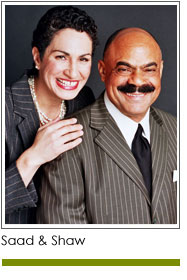 Fundraising reports can clearly communicate progress towards agreed upon goals and milestones. They can also take a lot of time to produce. They can be confusing. They can have too much detail, or too little. They can engage and energize. They can also obfuscate.
Fundraising reports can clearly communicate progress towards agreed upon goals and milestones. They can also take a lot of time to produce. They can be confusing. They can have too much detail, or too little. They can engage and energize. They can also obfuscate.
Through our work we have been exposed to the diversity of fundraising reports. We have seen staff focus all their attention on producing reports per board requests, only to have board members request different information in the meeting. We have watched board members’ heads nod trying to stay awake during fundraising presentations that include slide after slide of comparisons against prior years, goals, and other benchmarks. We have flipped through binders that include copies of proposals submitted, detailed gift reports that list each gift from $1 to $1 million, and lists of potential donors. We’ve heard board members complain, “with all that paper I still don’t know how much we need to raise.” And we’ve heard the exasperations of staff, “They want to know why we didn’t meet goal, but when we explain they aren’t interested.”
Producing fundraising reports can consume valuable time for a small, emerging or under-resourced nonprofit. Yet these reports are vital to the fundraising and oversight responsibilities of a board. The challenges and frustrations that arise when producing or reviewing reports can reflect an organization’s fundraising capacity and infrastructure. Examples include software or a database that can’t produce reports the board requests, or gifts that are entered incorrectly or categorized inconsistently. Frustrations over reports can also underscore an underlying tension between the board and executive. Streamlining the fundraising report process can help clarify an organization’s health and expose challenges and opportunities. Taking the time to identify the important information the board or campaign committee wants to review and measure, and determining how to succinctly present that information can help increase organizational health.
We want to know about your experiences. As a board member, development professional, volunteer or staff person, what are your thoughts on the types of fundraising reports that support transparency and accountability? As a board member, what are your expectations when attending a development committee meeting, or hearing a fundraising report at the full board level? As a development professional, what will help you support and engage board members and volunteers?
In your opinion, what are the five things board members or fundraising volunteers should track? What are your pet peeves? Your suggested solutions? Do reports engage board members and volunteers, or push them away? Do your reports include acronyms, language and references that people don’t understand? Are there guidelines for how gifts are categorized and credited? Tell us how your organization improved its reporting.
We want to know your thoughts and will share them in a future column. Please email us at news@saadandshaw.com
Copyright 2014 – Mel and Pearl Shaw
Mel and Pearl Shaw position nonprofits, colleges and universities for fundraising success. For help with your campaign visit www.saadandshaw.com or call (901) 522-8727.











